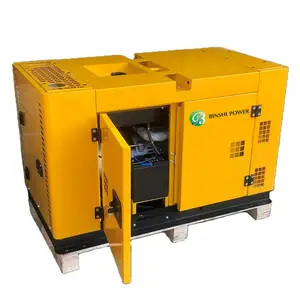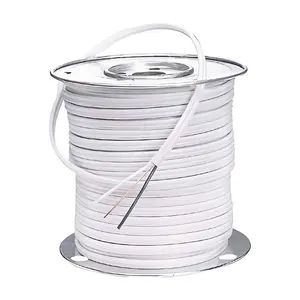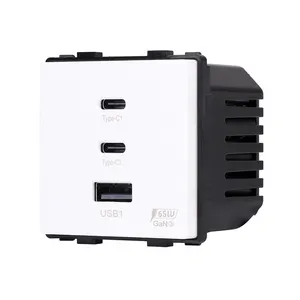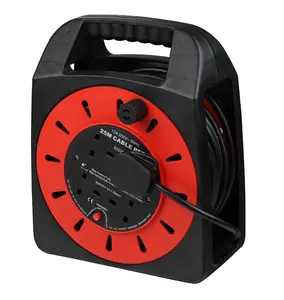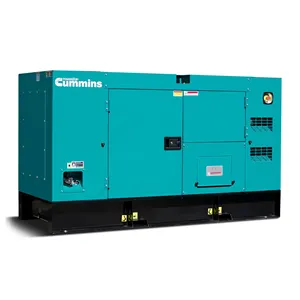ได้รับความนิยมในอุตสาหกรรมของคุณ






ขั้วต่อเซอร์โวมอเตอร์36Pin MDR 36Pin ตัวผู้ปลั๊ก MDR 36P หัวต่อ36Pin SM 10336-52A0-008 3ม. 36P 10136-3000PE 10136-3000ชิ้น
พร้อมส่ง
฿28.73 - ฿33.57
การสั่งซื้อขั้นต่ำ: 30 ชิ้น
การจัดส่งต่อชิ้น: ฿26.11



ผู้ผลิตสายเคเบิลแบนชุดเครื่องพิมพ์สายเคเบิลข้อมูลสายรัดสายเคเบิล
฿11.19 - ฿11.57
การสั่งซื้อขั้นต่ำ: 200 ชิ้น







ขั้วต่อเซอร์โวมอเตอร์20Pin MDR ปลั๊ก20Pin SCSI 20Pin ตัวผู้ขั้วต่อ SM 20P 10120-3000PE 3M 20P 10120-3000ชิ้น10320-52A0-008
พร้อมส่ง
฿26.49 - ฿29.84
การสั่งซื้อขั้นต่ำ: 30 ชิ้น
การจัดส่งต่อชิ้น: ฿25.74







สายเคเบิลเซอร์โวซีรีส์ V90 svlec
฿296.54 - ฿337.19
การสั่งซื้อขั้นต่ำ: 10 ชิ้น
การจัดส่งต่อชิ้น: ฿352.49







ชุดสายเคเบิลประกอบขึ้นด้วย svlec สายเชื่อมต่อ M12แบบแผ่น5PIN อัจฉริยะ
฿127.57 - ฿194.34
การสั่งซื้อขั้นต่ำ: 20 ชิ้น
การจัดส่งต่อชิ้น: ฿735.92







3 M SCSI สายเคเบิล 36Pin MDR 26 PIN MDR สาย 3 M
฿149.20 - ฿186.50
การสั่งซื้อขั้นต่ำ: 20 ชิ้น
การจัดส่งต่อชิ้น: ฿51.11



SCSI 36 Pin ชาย 36Pin Foil และ Braided Shield Solder ชุด SCSI สำหรับกล้อง
พร้อมส่ง
฿279.75 - ฿298.40
การสั่งซื้อขั้นต่ำ: 500 ชิ้น
การจัดส่งต่อชิ้น: ฿123.84






สายบัดกรี36 P-36 P ตัวผู้ SCSI ตัวเชื่อมต่อ36พิน hpcn แบบตรง36Pin ประกอบสายเคเบิล SCSI
฿1,864.98
การสั่งซื้อขั้นต่ำ: 100 ชิ้น






สายเคเบิลอะแดคปเตอร์เครื่องพิมพ์ USB Type A 2.0 ถึง SCSI 36pin สีดํา 30 ซม
฿197.32 - ฿223.43
การสั่งซื้อขั้นต่ำ: 50 ชิ้น
การจัดส่งต่อชิ้น: ฿35.44






VHDCI สายเคเบิลเชื่อมต่อ Amphenol,สายเคเบิลตัวเชื่อมต่อ Amphenol ประกอบด้วย SCSI ตัวผู้ไปยังตัวผู้ตัวเมีย68Pin 36 50 68ขา36Pin ขั้วต่อสังกะสีอัลลอย
฿100.34 - ฿152.56
การสั่งซื้อขั้นต่ำ: 50 ชิ้น




ที่มีคุณภาพสูงMDRเคเบิ้ล36ขาเชื่อมต่อISO9001 ISO14001ได้รับการอนุมัติผู้ผลิต
฿704.97 - ฿887.73
การสั่งซื้อขั้นต่ำ: 10 ชุด
การจัดส่งต่อชิ้น: ฿120.11






สายเคเบิลป้องกัน8pin M12หัวเชื่อมต่อรหัส X, สายเชื่อมต่ออีเทอร์เน็ตกันน้ำยานยนต์ชาย USB หญิงอะแดปเตอร์หญิง TPU
฿37.30 - ฿373.00
การสั่งซื้อขั้นต่ำ: 100 ชิ้น



SCSI Connector SCSI 20Pin MDR สายเคเบิล MDR ตัวเมียไปยังตัวเมียสายเคเบิล SCSI 20 0.050นิ้ว1.27มม. 20pin มม.
พร้อมส่ง
฿52.22
การสั่งซื้อขั้นต่ำ: 100 ชิ้น
การจัดส่งต่อชิ้น: ฿38.05






HPDB36 SCSI สาย HPDB36ชายชาย HPDB 36 Pin To HPDB 36Pin CN เชื่อมต่อ Breakout สำหรับ Capture Card
฿130.55 - ฿373.00
การสั่งซื้อขั้นต่ำ: 10 ชิ้น






กันน้ำสาย M12 TO DB9 ตัวเชื่อมต่อชาย
พร้อมส่ง
฿67.14 - ฿93.25
การสั่งซื้อขั้นต่ำ: 20 ชิ้น
การจัดส่งต่อชิ้น: ฿57.07




SCSI 2 Sd SCSI2sd IDC ชายเสียบสายแบน SCSI-2 3.5 DB50P "50พิน SCSI ไปยังการ์ด Sd
฿74.23 - ฿1,118.62
การสั่งซื้อขั้นต่ำ: 20 ชิ้น






Scsi Vhdci 36ขาชายไปยังชาย Scsi ชุดสายไฟ0.8มม. ชายกับลวด IO สายเชื่อมต่อ36Pin สายเคเบิล
พร้อมส่ง
฿294.67 - ฿406.57
การสั่งซื้อขั้นต่ำ: 10 ชิ้น
การจัดส่งต่อชิ้น: ฿182.03




หัวต่อสาย SCSI MDR 14พิน36พิน,หัวต่อสายเคเบิลตัวผู้พร้อมฮู้ด ABS ชนิด Scsi 14pin 36pin Conector ตัวผู้สำหรับสายเคเบิล
พร้อมส่ง
฿47.75 - ฿62.67
การสั่งซื้อขั้นต่ำ: 50 ชิ้น
การจัดส่งต่อชิ้น: ฿31.71






ขั้วต่อตัวผู้36ขาสำหรับสายเคเบิล SCSI 36Pin hpdb 36 P SCSI
พร้อมส่ง
฿88.78 - ฿118.62
การสั่งซื้อขั้นต่ำ: 20 ชิ้น
การจัดส่งต่อชิ้น: ฿57.82






SCSI 36p ฝาครอบปลั๊กเปลือกโลหะช่องเสียบเฉียงเชื่อมเชื่อมต่อโลหะผสมสังกะสีฝาครอบกันฝุ่น SCSI MDR 36pin ฝากระโปรง
฿50.36 - ฿69.01
การสั่งซื้อขั้นต่ำ: 50 ชุด
การจัดส่งต่อชิ้น: ฿33.57






เซอร์โวเข้ารหัสคุณภาพสูงความสูง39.0มม. ขั้วต่อ SCSI 14pin 20Pin 26pin 36pin 50pin ขั้วต่อสายเชื่อม SCSI ชาย
฿31.34 - ฿32.46
การสั่งซื้อขั้นต่ำ: 1000 ชิ้น
การจัดส่งต่อชิ้น: ฿4.11






26Pin, 36Pin, 50Pin, 68Pin หัวแร้งหญิงสําหรับการประกอบสายเคเบิล, ซ็อกเก็ต SCSI II สําหรับสายเคเบิล
พร้อมส่ง
฿373.00
การสั่งซื้อขั้นต่ำ: 20 ชิ้น
การจัดส่งต่อชิ้น: ฿36.19






ตัวเชื่อมต่อ MDR SSI D-Sub ตัวเมียเลือกได้หลายแบบ Counts-14pin 20pin 26Pin 36Pin 50Pin 100PIN 68PIN
฿85.79 - ฿104.44
การสั่งซื้อขั้นต่ำ: 1 ชิ้น
การจัดส่งต่อชิ้น: ฿456.18






ขั้วต่อสาย36Pin ตัวผู้ MDR 36Pin hpcn SSI MDR อัจฉริยะพร้อมฮูดแบบ ABS
฿22.38 - ฿93.25
การสั่งซื้อขั้นต่ำ: 500 ชิ้น




ตัวเข้ารหัสเซอร์โวคุณภาพสูงความสูง39.0มม. ตัวเชื่อมต่อ20Pin 14pin 36Pin 26Pin SCSI 50Pin ตัวเชื่อมต่อสายเชื่อมตัวผู้ SCSI
พร้อมส่ง
฿18.65 - ฿21.27
การสั่งซื้อขั้นต่ำ: 100 ชิ้น
การจัดส่งต่อชิ้น: ฿16.79






สายเคเบิลต่อสาย SCSI PCB 14 P 14พินตัวเชื่อมต่อสายไฟตัวผู้ตัวเมียคุณภาพสูง D เทอร์มินอล3M Half Pitch
฿33.20 - ฿74.23
การสั่งซื้อขั้นต่ำ: 200 ชิ้น






CUSTOM DB9 หญิง ODB II ชาย
พร้อมส่ง
฿67.14 - ฿93.25
การสั่งซื้อขั้นต่ำ: 20 ชิ้น
การจัดส่งต่อชิ้น: ฿57.07


36Pin 0.050นิ้ว1.27มม.MDR สาย Mount ชายปลั๊ก Scsi สำหรับ Servo Motor 3M 10336 CN 36Pin 1.27มม.MDR Mount ปลั๊ก
พร้อมส่ง
฿54.09
การสั่งซื้อขั้นต่ำ: 100 ชิ้น
การจัดส่งต่อชิ้น: ฿38.05






Scsi Vhdci 68ขาชายหญิงตรงไปยังชาย Scsi ชุดสายไฟ0.8มม. สายเชื่อมเชื่อมต่อสายเคเบิล68Pin
พร้อมส่ง
฿294.67 - ฿406.57
การสั่งซื้อขั้นต่ำ: 10 ชิ้น
การจัดส่งต่อชิ้น: ฿150.32



ขั้วต่อ SCSI 36พินสำหรับสายเคเบิล Scsi 36Pin HPDB 36 P
พร้อมส่ง
฿88.78 - ฿118.62
การสั่งซื้อขั้นต่ำ: 50 ชิ้น
การจัดส่งต่อชิ้น: ฿42.53






ขั้วต่อสายเคเบิลตัวผู้ SSI MDR 14พิน36พินพร้อมฝากระโปรงหน้า SCSI ชนิดบัดกรีขั้วต่อตัวผู้36Pin 14pin สำหรับสายเคเบิล
พร้อมส่ง
฿47.75 - ฿62.67
การสั่งซื้อขั้นต่ำ: 20 ชิ้น
การจัดส่งต่อชิ้น: ฿113.77






ขั้วต่อ SCSI 14 20 26 36 50 68 100 Pin 20Pin 50Pin ขั้วต่อเซอร์โวและตัวแปลงพิน
฿31.71 - ฿242.08
การสั่งซื้อขั้นต่ำ: 100 ชิ้น
การจัดส่งต่อชิ้น: ฿12.69






ผู้ผลิตสายอะแดปเตอร์ SCSI เป็น USB,ดิสก์สูง USB เป็น Hd 50พิน SCSI 68 Adaptador Adaptateur
฿372.63 - ฿1,118.62
การสั่งซื้อขั้นต่ำ: 20 ชิ้น






สายเคเบิล36Pin ตัวผู้ MDR 36Pin SCSI MDR อัจฉริยะพร้อมขั้วต่อแบบฝากระโปรง ABS ชนิดบัดกรี
฿149.20 - ฿186.50
การสั่งซื้อขั้นต่ำ: 20 ชิ้น
การจัดส่งต่อชิ้น: ฿51.11






14pin 20Pin 26pin 36pin สายเชื่อม SCSI Connector ตัวเชื่อมต่อ Servo Encoder คุณภาพสูงตำแหน่ง SCSI 50pin
฿21.27 - ฿22.38
การสั่งซื้อขั้นต่ำ: 1000 ชิ้น
การจัดส่งต่อชิ้น: ฿2.99






SCSI 36 Pin Mini D ริบบิ้นชายบัดกรีเซอร์โวตัวเชื่อมต่อ, 36pin สายบัดกรี MDR ชาย SCSI ตัวเชื่อมต่อ w/พลาสติกฝุ่น
พร้อมส่ง
฿48.49 - ฿93.25
การสั่งซื้อขั้นต่ำ: 100 ชิ้น
การจัดส่งต่อชิ้น: ฿36.93






SCSI 36P หญิง IDC ประเภทสังกะสีอัลลอยด์ฝากระโปรงสําหรับสายเคเบิล,HPCN 36Pin หญิงสําหรับสายเคเบิล,MDR 36p หญิงสําหรับสายเคเบิล
พร้อมส่ง
฿402.84 - ฿406.57
การสั่งซื้อขั้นต่ำ: 20 ชิ้น
การจัดส่งต่อชิ้น: ฿36.19






3เมตรขั้วต่อ MDR SCSI 20PIN 14PIN 26PIN 36PIN 50PIN 100PIN 68PIN 0.050นิ้ว1.27มม. ขั้วต่อ MDR
฿3.73 - ฿18.65
การสั่งซื้อขั้นต่ำ: 100 ชิ้น






ปรับแต่ง 14P 20P 26P 36P 50P IEEE1284(MDR) SCSIสาย
พร้อมส่ง
฿67.14 - ฿93.25
การสั่งซื้อขั้นต่ำ: 20 ชิ้น
การจัดส่งต่อชิ้น: ฿57.07
หมวดหมู่ยอดนิยม
เกี่ยวกับ สายเคเบิล scsi 36pin
คว้าข้อเสนอที่ดีที่สุด สายเคเบิล scsi 36pin บน Alibaba.com วันนี้ อุปกรณ์เสริมไฟฟ้าเหล่านี้มีด้านชายและหญิงที่เชื่อมต่อกับการเชื่อมต่อแบบถาวรหรือชั่วคราว .. สายเคเบิล scsi 36pin มีความสำคัญและเพิ่มกระบวนการผลิต ช่วยให้สามารถเชื่อมต่อจำนวนมากและเพิ่มผลผลิตได้อย่างราบรื่น อุปกรณ์เสริมเหล่านี้มีการกรองสัญญาณรบกวนแม่เหล็กไฟฟ้าและคลื่นความถี่วิทยุในการเชื่อมต่อ ให้การเชื่อมต่อไฟฟ้าที่ราบรื่นและง่ายต่อการอัพเกรดตามความต้องการของผู้ใช้
อุปกรณ์เสริมเหล่านี้มีประสิทธิภาพและกันน้ำได้ ป้องกันการเชื่อมต่อไฟฟ้าจากการสัมผัสน้ำ เหล่านี้ สายเคเบิล scsi 36pin พบได้ทั่วไปใน Alibaba.com ในราคาที่เป็นมิตรกับกระเป๋า ทนต่อสกุลเงินไฟฟ้าแรงสูงและให้การปกป้องผู้ใช้ มีความสามารถในการเชื่อมต่อที่หลากหลายทำให้เป็นสากลเนื่องจากสามารถใส่ได้กับสายไฟและตัวเลือกการเชื่อมต่อต่างๆ อุปกรณ์เสริมเหล่านี้ทนต่อฉนวนและเป็นมิตรกับสิ่งแวดล้อม วัสดุหุ้มเปลือกช่วยให้มั่นใจได้ถึงความปลอดภัยจากอัคคีภัยในกรณีไฟฟ้าขัดข้อง มีคุณสมบัติป้องกันการระเบิดและไม่เป็นสนิมสำหรับการเคลือบที่ทนทาน
สายเคเบิล scsi 36pin ประหยัดและสามารถใช้ซ้ำได้ มีความเข้ากันได้สูงมากทำให้การเชื่อมต่อมีประสิทธิภาพ ง่ายต่อการเชื่อมต่อและด้วยการออกแบบกันลื่นและล็อค การออกแบบเหล่านี้ทำให้ปลอดภัยและเป็นมิตรกับผู้ใช้ สามารถปรับแต่งได้ตามความต้องการของผู้ใช้และมีรอบการเสียบและถอดปลั๊กหลายรอบ มีการจัดการที่สะดวกสบายและให้ความยืดหยุ่นในการเชื่อมต่อ อุปกรณ์เสริมกันน้ำมันและความชื้นทำให้การเชื่อมต่อสะอาด
Alibaba.com มีคุณภาพสูงให้เลือกมากมาย ตัวเลือก สายเคเบิล scsi 36pin มีความทนทานและทำให้การเชื่อมต่อไฟฟ้าปลอดภัยและเป็นระเบียบมากขึ้น รับตัวเลือกที่ดีที่สุดจากซัพพลายเออร์และผู้ผลิตที่ผ่านการตรวจสอบแล้วทั่วโลก
อุปกรณ์เสริมเหล่านี้มีประสิทธิภาพและกันน้ำได้ ป้องกันการเชื่อมต่อไฟฟ้าจากการสัมผัสน้ำ เหล่านี้ สายเคเบิล scsi 36pin พบได้ทั่วไปใน Alibaba.com ในราคาที่เป็นมิตรกับกระเป๋า ทนต่อสกุลเงินไฟฟ้าแรงสูงและให้การปกป้องผู้ใช้ มีความสามารถในการเชื่อมต่อที่หลากหลายทำให้เป็นสากลเนื่องจากสามารถใส่ได้กับสายไฟและตัวเลือกการเชื่อมต่อต่างๆ อุปกรณ์เสริมเหล่านี้ทนต่อฉนวนและเป็นมิตรกับสิ่งแวดล้อม วัสดุหุ้มเปลือกช่วยให้มั่นใจได้ถึงความปลอดภัยจากอัคคีภัยในกรณีไฟฟ้าขัดข้อง มีคุณสมบัติป้องกันการระเบิดและไม่เป็นสนิมสำหรับการเคลือบที่ทนทาน
สายเคเบิล scsi 36pin ประหยัดและสามารถใช้ซ้ำได้ มีความเข้ากันได้สูงมากทำให้การเชื่อมต่อมีประสิทธิภาพ ง่ายต่อการเชื่อมต่อและด้วยการออกแบบกันลื่นและล็อค การออกแบบเหล่านี้ทำให้ปลอดภัยและเป็นมิตรกับผู้ใช้ สามารถปรับแต่งได้ตามความต้องการของผู้ใช้และมีรอบการเสียบและถอดปลั๊กหลายรอบ มีการจัดการที่สะดวกสบายและให้ความยืดหยุ่นในการเชื่อมต่อ อุปกรณ์เสริมกันน้ำมันและความชื้นทำให้การเชื่อมต่อสะอาด
Alibaba.com มีคุณภาพสูงให้เลือกมากมาย ตัวเลือก สายเคเบิล scsi 36pin มีความทนทานและทำให้การเชื่อมต่อไฟฟ้าปลอดภัยและเป็นระเบียบมากขึ้น รับตัวเลือกที่ดีที่สุดจากซัพพลายเออร์และผู้ผลิตที่ผ่านการตรวจสอบแล้วทั่วโลก
